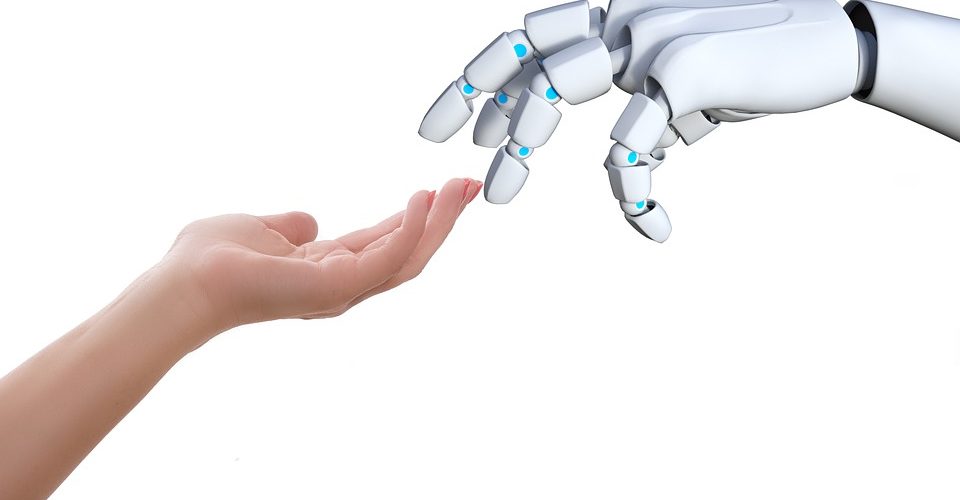Can You Feel It?

When I was two years old, our dog severely injured my mum’s hand during an epileptic episode. While she retained her fingers, she could not feel temperatures or pain. This led to a long recuperation and frequent scalds and burns for my mum as she adapted to her new, unfeeling hand.
Innovation and multidisciplinary collaboration are key to developing impactful medical technologies that can truly improve a person’s quality of life. Industrial accidents, domestic injuries and animal attacks are among the most common causes of hand-related nerve damage – which is irreversible. Even surgery or injuries, such as fracturing a wrist, can cause loss of physical sensation.
A Show of Hands…
There are two courses of action following nerve damage to the hand. If the wound is visible, you are taken to the surgeon. However, if the wound is not obvious and hidden within the tissue, you may have a scan performed which may not identify nerve damage immediately. Both cases can affect normal hand function, including the ability to grip, move one’s fingers and perceive temperature changes or physical pain. For many people, such injuries disrupt their ability to participate at work and use everyday items, such as phones or keyboards, or other small items requiring dexterity like coins, keys or a pencil. While surgical techniques are becoming more refined, new rehabilitation processes are still required to recover physical sensation and independence for the patient.
Creative Spirits
Born in August 2017 from the tech and design savvy minds of Laura Bücheler and Isabella Hillmer, GHOST explores the idea of returning sensation to affected limbs using smart materials and technologies. GHOST’s main mission, as stated by Laura, is to “broaden human perception…developing a non-invasive smart glove that will recreate feeling in patients hands after nerve damage……[to] increase quality of life”. Particularly in those with neurological damage, this technology will not only empower patients but reduce phantom pain and secondary injuries; two major impacts on healthcare resources and finances.
Laura initially studied Engineering Science in Munich, but after realising she had a passion for a combination of biology and engineering, she enrolled at the University of Strathclyde to gain an MSc in Biomedical Engineering. By contrast, Co-Founder Isabella studied Neuroscience and Industrial Design, combining her passions for understanding human perception and its enhancement. Both thinkers, thus, have a clear passion for multidisciplinary work. Their different fields permit different outlooks on the same problem, which is key to their company’s innovation. Following their initial discussion – more of an informal chat between friends – both used their broad field knowledge to develop a non-invasive smart glove to return feeling to damaged nerves.
Medical prejudice against new biotech
Innovation within biomedical engineering is making diagnostics and treatment more efficient. “Innovation is necessary, and a lot of ideas are created and verified every day” states Laura, after gaining experience in simultaneously innovating and communicating with the healthcare sector. However, the healthcare and medical device sectors are painstakingly slow in adopting new technologies. Funding strains and pressure to deliver quality healthcare within budget often means that great new tech often can’t be implemented, to the dismay of clinician and device engineer alike. Laura also notes “The process is further prolonged by necessary quality assurance and certifications”, which are required when a new product hits the market. Yet surprisingly (at least to myself and Laura) high costs and prejudice are not the only reason why many smart technologies remain unused. Healthcare suffers from a major case of ‘if it ain’t broke, don’t fix it’. Typical to emerging technologies, physicians and biomedical engineers are often sceptical of a device’s performance and reluctant to accept new kit. But this has not held back the GHOST team. If anything, it drives them to make a medical device that is more effective and can truly benefit its target patients.
Be convinced by your own ideas
The development of Laura and Isabella’s idea required funding and exposure. Initial pitches (once, travelling 585 km from Munich to Berlin, presenting in both cities) bloomed into awards and prize funds, allowing them to streak ahead with their idea. “I am convinced we went through the pitches so smoothly because we were so focused on being on time that we didn’t have time to be nervous” laughs Laura, continuing “and the best way of selling your idea to the audience is to be the one most convinced of it!”. She notes that they tried to remain a few steps ahead before a pitch, “it is important to see the big picture – as a startup, you must remain flexible and adapt to situations and opportunities quickly”.
GHOST’s attitude created a positive response within the startup community and the MedTech innovation scene. Winning prizes and awards have allowed the GHOST team to work full-time on what began as a passion project in their free time. Excitingly, GHOST has just been voted one of the top 500 deep-tech startups of 2018 and will be attending the ‘Hello Tomorrow’ deep-tech conference and competition.
While both acknowledge that financiers and medical device quality assurance are a longer idea-to-market time scale, Laura and Isabella are encouraged by the positivity and they are driven by the potential healthcare impact of their technology. They hope to encourage fellow biomedical engineers to follow through with their ideas. Regulations “imply less competition and increased company value when you make it to the market,” Laura assures. We can only wait for more startups like GHOST; interdisciplinary teams brimming with passion, enthusiasm and trust in their goals that stir the medical device industry. Can you already feel it?
This article was specialist edited by Laura Turpeinen and copy-edited by Kirsty Callan.









